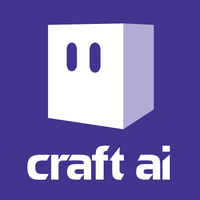TOP MACHINE LEARNING SOFTWARES AND TOOLS



Choose Other Top Software Providers
TOP MACHINE LEARNING SOFTWARES AND TOOLS resources
Latest Posts
9 Artificial Intelligence Trends You Should Keep An Eye On In 2019
Artificial Intelligence has become a hot topic in tech circles. It has not only changed our lives, but it has also disrupted every industry you can think of. Despite all this, people have different perception about it. Some might consider it as a bad thing because they are told that it will take your job away from you in near future. On the other hand, AI advocates continues to think of AI as an enabler which will reduce your burden and make your life easy by automating things.
Top Artificial Intelligence and Machine Learning Trends in 2019
Artificial Intelligence and Machine Learning have been the most discussed amongst other emerging technologies of 2018, adding the extra zing to the coffee breaks of technocrats. With global leaders like Amazon, Google and Microsoft ramping up resources for research in these fields, the trend is definitely not going to dip down anytime soon. In fact, Google is offering free online training to enhance knowledge and build capabilities.
Analysts believe, 2019 is going to be the year for business enterprises who have been waiting to finally get on board to witness a plethora of advancements for their industry. What are the technology disruptions we expect next year? New and innovative uses for machine learning across industries? Impact of artificial intelligence in education? Human and machine interaction evolving further? The rise of AI-powered assistants? This is just the starting of the digital revolution, so let's educate ourselves on what the mavens of Artificial Intelligence and Machine Learning are predicting for the months ahead.
Top AI and Machine Learning Trends for 2019
There’s never been a more exciting time for AI and machine learning, and 2019 is boding well for the rich lineup of applications these revolutionary technologies are offering. Companies are finding that AI-driven processing of data yields not only more efficient business processes but better overall business results. And those companies that invest in employee upskilling will find themselves well positioned to exploit new market opportunities in the coming year.
Following are some trends and opportunities we see on the horizon.
5 Deep Learning Trends that will Rule 2019
Deep learning, powered by deep neural networks, can deliver significant benefits to organizations on their transformation journey. Trends related to transfer learning, vocal user interface, ONNX architecture, machine comprehension and edge intelligence will make deep learning more attractive to businesses in the near future. There is no doubt that we will continue to see a growth in the application of deep learning methods in 2019 and beyond.
5 imperative Deep Learning trends in 2019
Deep learning is a category of machine learning that creates algorithms known as artificial neural systems which operate by forming the function and structure of the human mind. Deep Learning is certainly not a latest AI wonder, yet lately, as machines have turned out to be progressively smart, it has genuinely exploded, accomplishing results that are better than anyone might have expected previously, with deep neural networks also beating humans in a few situations.
Deep learning and machine learning have evolved from the corresponding roots in computer science, practicing many of the related theories and procedures. Basically, machine learning is a branch of Artificial Intelligence which allows a system to gain insight via a managed training experience.
5 Artificial Intelligence Trends To Watch Out For In 2019
During 2018, we witnessed a dramatic rise in the platforms, tools, and applications based on Machine learning and artificial intelligence. These technologies not only impacted software and the Internet industry but also other verticals such as healthcare, legal, manufacturing, automobile and agriculture.
5 key Machine Learning trends for 2019
By 2021, 10 percent of all new vehicles will have autonomous driving capabilities, Gartner predicts. Machine Learning (ML) — a subset of Artificial Intelligence (AI) — heavily fuels autonomous vehicle capabilities. Simply put, without machine learning driverless vehicles are just a sci-fi fantasy.
Machine learning, in simple terms, is the ability of machines to learn from data and make decisions and again unlearn and relearn through the new data sets available. A real-life example is, how Netflix’s recommendation system works. Netflix uses a combination of experts to tag the content on their platform and the user data it collects. It then applies machine learning algorithms to generate recommendations to the viewers. This is one of the core competencies of Netflix that helps them to stay ahead of competitors.
Tools and Techniques for Machine Learning
Simply put, machine learning is a form of data analysis. Using algorithms that continuously learn from data, machine learning allows computers to uncover hidden patterns without being explicitly programmed to do so. The key aspect of machine learning is that as models are exposed to new data sets, they adapt to produce reliable and consistent output. In this course, we will cover the tools/techniques that are currently associated with the discipline of machine learning. We will start by exploring the field of machine learning and then gradually delve into practical examples of how to leverage machine learning algorithms to derive insights from big data. Once we have attained practical exposure to utilizing machine learning algorithms, we will use visualization capabilities to surface the output generated by the machine learning algorithms. Finally, we will explore the field of deep learning and understand how it differs from machine learning.
Best AI and machine learning tools for developers
As adoption of AI and machine learning increases amongst businesses, the number of software tools for developers has also grown.
Knowing which software to use could mean the difference between building a fully functioning AI algorithm and creating a racist, sexist bot with a one syllable name (sorry Microsoft). Perhaps.
If nothing else, getting to know different AI frameworks and APIs will enable developers to learn new skills as the demand for knowledge in AI and machine learning grows.
Techworld explores the top tools on the market.
This list is just the start and will continue to be updated. If you'd like to suggest one for consideration, let us know here.
Best Machine Learning Tools: Experts Top Picks
The best trained soldiers can’t fulfill their mission empty-handed. Data scientists have their own weapons — machine learning (ML) software. There is already a cornucopia of articles listing reliable machine learning tools with in-depth descriptions of their functionality. Our goal, however, was to get the feedback of industry experts.
And that’s why we interviewed data science practitioners — gurus, really —regarding the useful tools they choose for their projects. The specialists we contacted have various fields of expertise and are working in such companies as Facebook and Samsung. Some of them represent AI startups (Objection Co, NEAR.AI, and Respeecher); some teach at universities (Kharkiv National University of Radioelectronics). The AltexSoft data science team joined the discussion, too.
Machine learning has grown to be one of the hottest job markets in India with tech giants and startups poring billions to this emerging field. Given the slew of opportunities that it has opened up, both fresh IT graduate and experienced enthusiast ar
List and Comparison of the best paid as well as open source free Machine Learning Tools:
What is Machine Learning?
With the help of machine learning systems, we can examine data, learn from that data and make decisions. Machine learning involves algorithms and Machine learning library is a bundle of algorithms.
Where do we use machine learning in our day to day life? Let's explore some examples to see the answer to this question.
15 Machine Learning Tools For ML Enthusiasts To Hone Their Skills
Machine learning has grown to be one of the hottest job markets in India with tech giants and startups poring billions to this emerging field. Given the slew of opportunities that it has opened up, both fresh IT graduate and experienced enthusiast are reaching out to learn more about coding and various programming languages to set a better foot in the ML field.
In the midst of this buzz, there are numerous non-programmers who don’t exactly know how to code and yet want to delve into machine learning and stay abreast of this field.











